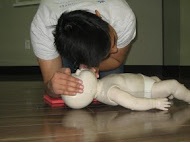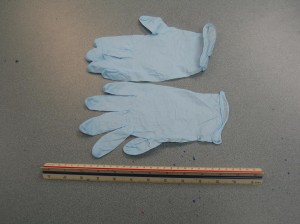Do you need CPR training and certification in Honolulu? Choose Honolulu CPR, one of the best providers of CPR training in Hawaii. We offer a variety of courses all through the week, even evenings and weekends when there are a lot of students applying for them. Our courses are not only very affordable, they are high quality as well. All of the courses are taught by instructors who are certified as well, so don’t hesitate to ask questions – they will be happy to answer whatever questions you may have.
Certification is awarded to all trainees, no questions asked.

All of the courses we have at Honolulu CPR are certification courses. We just require students to have complete attendance and a passing grade on the written and practical tests. Students can take the certificate exam again if they do not pass. Rest assured, all of our students leave us as certified CPR rescuers.
These training credentials that are awarded to our students are only valid for two years before they have to be renewed. To renew a training certificate, the rescuer has to sign up for a re-certification class before his or her certificate expires. If the rescuer allows the credential to expire, he or she is no longer qualified to take the shorter re-certification classes; he or she has to retake the training program.
Becoming a CPR rescuer in Honolulu

Hawaii is one of the top destinations in the world because of the amazing beaches and year-round great weather. Because all sides of the island as bordered by water, extreme water sports such as surfing, jet skiing, wake boarding, and other activities are very popular on the beaches. While commercial establishments that offer equipment for these activities are quite safe, accidents do happen, especially in water.
CPR rescuers can be lifeguards as well, because they receive training on how to manage cardiorespiratory emergencies. If a victim drowns and/or loses consciousness and remains unresponsive, the CPR rescuer will know how to give chest compressions and rescue breaths to try and revive him or her.
You can choose any of the following Honolulu CPR training programs:
- Heartsaver CPR and AED – 4 hours
- Heartsaver CPR and AED (C) – 4.5 hours
- Basic Life Support for healthcare providers – 4.5 hours
- Advanced Cardiac Life Support – 16 hours (in two days)
- Pediatric Advanced Life Support – 14 hours (in two days)
Basic vs. Advanced Life Support
You’ll notice that our programs are divided into two categories: basic and advanced training. Basic courses (the first three) are focused on skill building rather than in-depth knowledge and skill training in CPR. Advanced courses are tailored for people in healthcare while basic courses can be taken by lay people. Compared to Basic Life Support courses that just cover basic skills in CPR, Advanced Life Support courses teach medical management such as medication administration and diagnostic procedures in managing cardiac arrest.